-
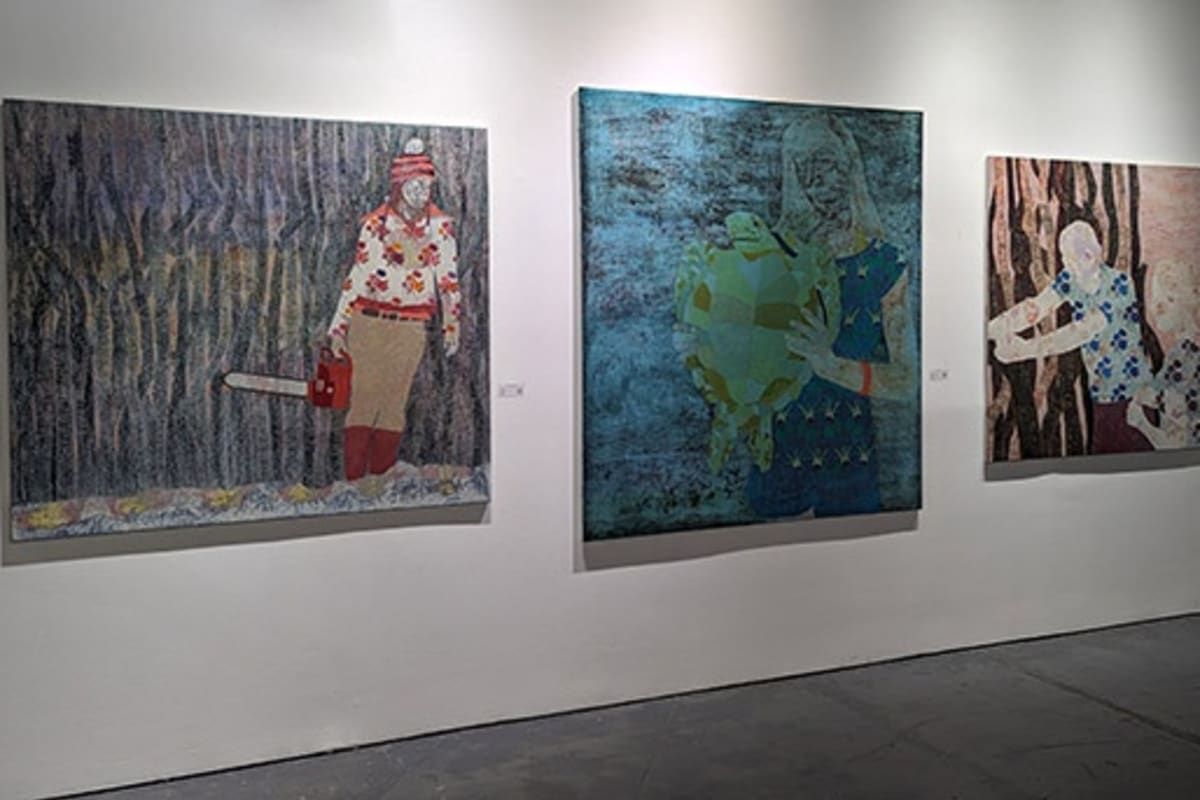
James Fisher's oil on linen works look like multimedia collages, but they are created entirely with paint. The artist gave us a detailed acoount of his unique process and how he achieves the mesmerizing textures and effects in his paintings.
-
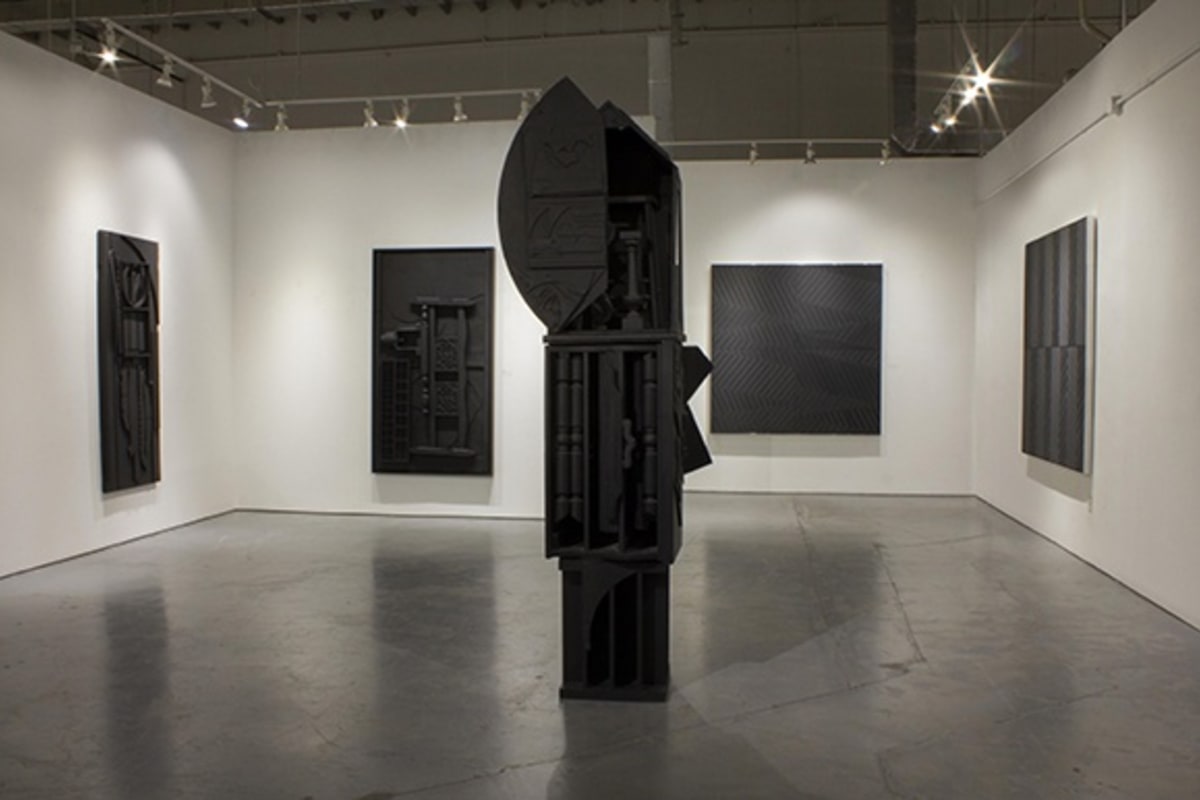
James Little's "Black Paintings" Series
The Meanings Behind the TitlesStructure is the underlying component in all of James Little’s works. Each element in his paintings, whether it’s a line, a tone or an angle, has a role to play. Through their interaction with other elements, each competing for the viewer’s attention, they create a conversation that gives each painting its spirit. While none of Little’s works have narratives, the titles of his paintings do have meanings.
“I don’t use meaningless titles, but the work reflects the titles,” Little said.
We recently sat down with him to learn more about the meanings behind the titles of his Black Paintings series, on exhibit at Rosenbaum Contemporary from September 8 through October 8.
-
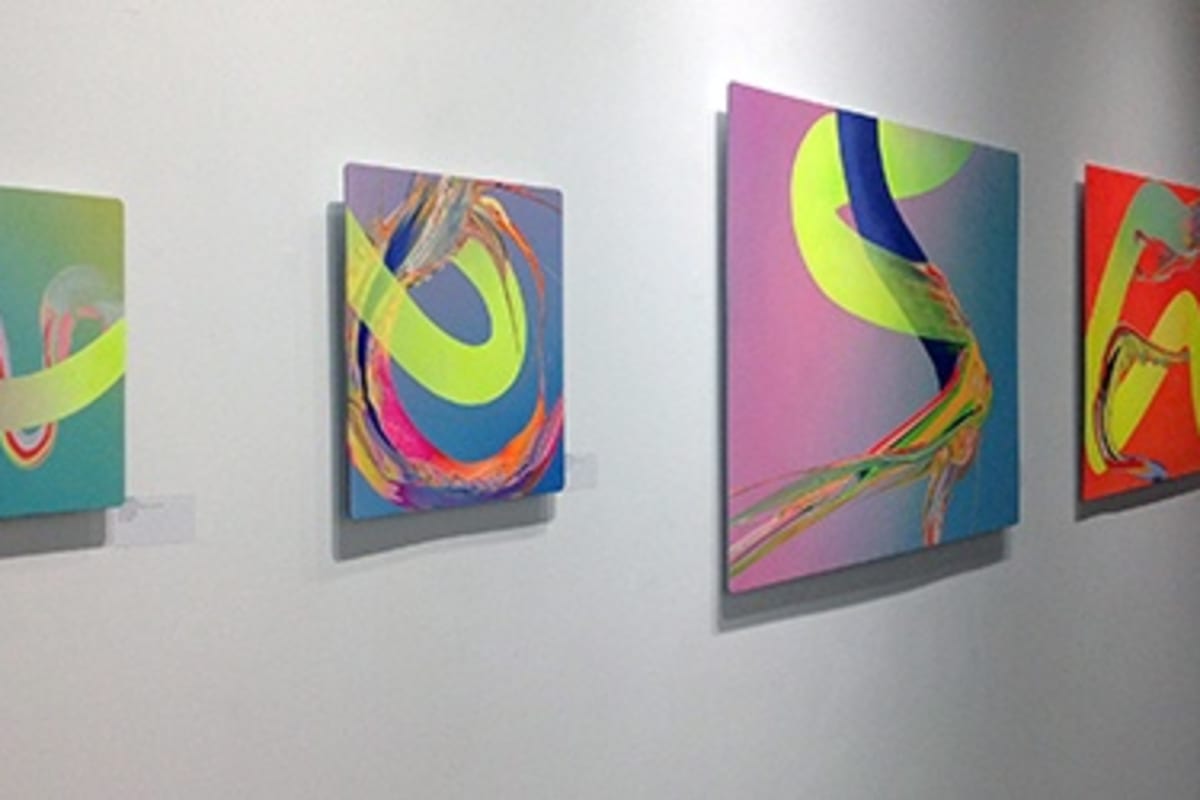
In discussing Erik Minter’s artwork, we turn to the writing of Clement Greenberg. In Greenberg’s writing, Avant-Garde and Kitsch, he discusses the duality of these two dichotomies (avant-garde and kitsch)—neither of absolutes, but orbiting on separate ellipses in the art world. We are reminded of this essay while we review Minter’s exploratory background: from working on Matthew Barney's final Cremaster 3 film series and his subsequent Guggenheim retrospective to helping design Paula Hayes’ Silicone planters, and unique experiences like assisting Tom Otterness in his studio, and creating 3-D sculptural processes for some of David Zwirner’s gallery artists. All in a day’s work of a top-notch preparator and designer, but where does the artist role begin and the designer dissolve? These two roles are seen as orbiting around the figure Minter, himself. One needs the other to survive, to flourish and to develop…conflicting manifestations dueling for reins on creative expression.
-
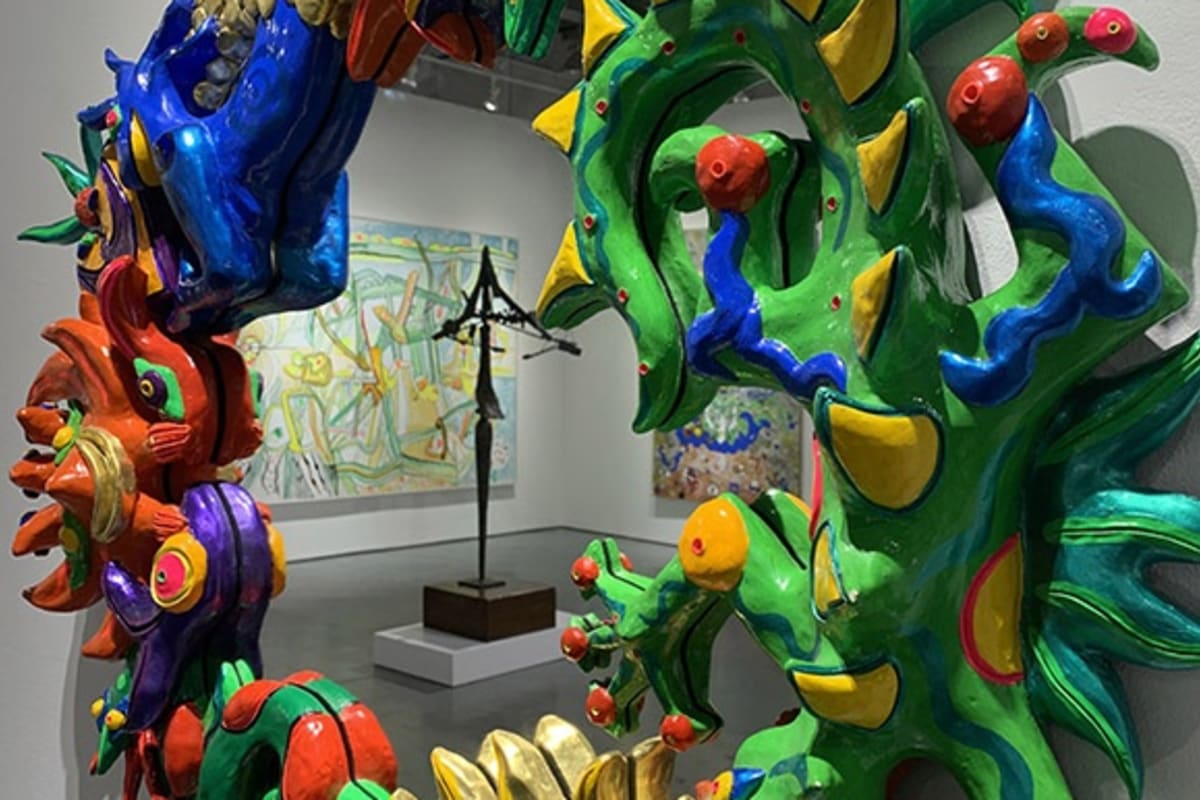 Roberto Matta's "Morphologie de l'ame" and "L'Impensable" reflected in Federica Matta's "Siren's Mirror"
Roberto Matta's "Morphologie de l'ame" and "L'Impensable" reflected in Federica Matta's "Siren's Mirror"Federica Matta reflects on the Two Generations exhibition at Rosenbaum Contemporary
-
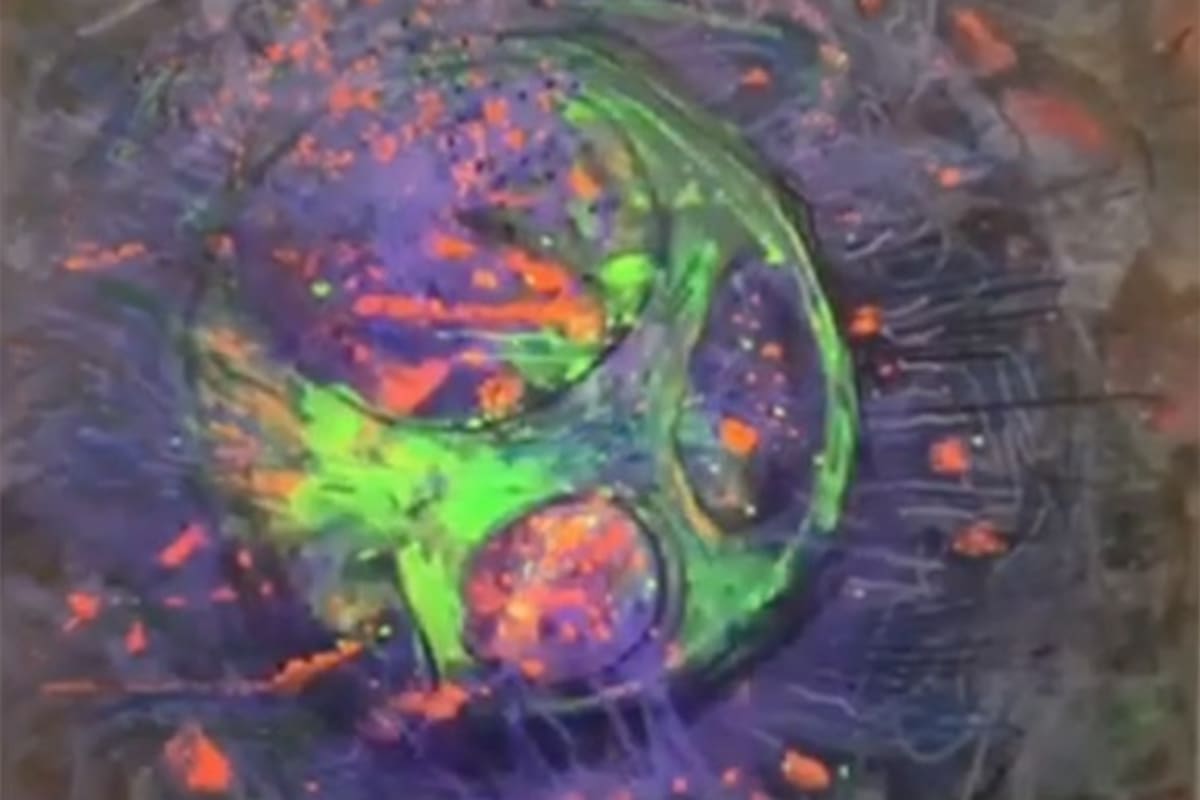 Detail of Roberto Matta's "La terre et ses oignons" under UV light
Detail of Roberto Matta's "La terre et ses oignons" under UV lightDuring the course of our Two Generations exhibition, we’ve discovered many fascinating parallels between Roberto Matta’s and Federica Matta’s art, some of which were unknown until their work was seen side by side.
-
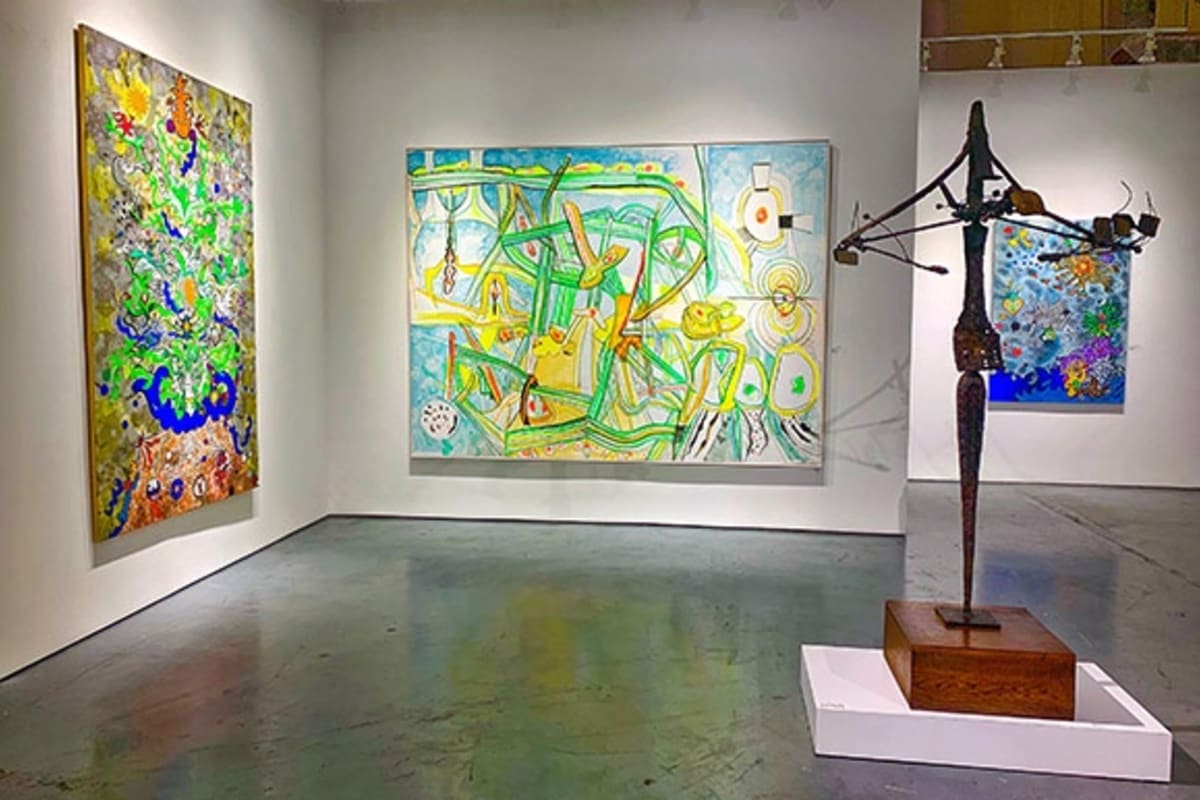 Works by Federica Matta and Roberto Matta in the "Two Generations" exhibition
Works by Federica Matta and Roberto Matta in the "Two Generations" exhibitionAn essay by Martica Sawin on the Two Generations exhibition at Rosenbaum Contemporary.
-
 Thomas Hartmann (front row, second from left) with his class at the Academy of Fine Arts Nuremberg
Thomas Hartmann (front row, second from left) with his class at the Academy of Fine Arts NurembergThe Dozen exhibition, on view at Rosenbaum Contemporary from October 11 through November 10, features new paintings by artist Thomas Hartmann along with works by 11 artists hand-selected by Hartmann from his master classes at the Academy of Fine Arts Nuremberg. The 11 artists have all been designated Meisterschüler by Hartmann—a title of distinction given to students at German art academies by their professors upon graduation in recognition of brillliant performance and the development of their own independent pictorial language. Of the 89 students Hartmann has taught since 2005, only 27 have earned this distinction.
Founded in 1662, the Academy of Fine Arts Nuremberg is the oldest art academy in German-speaking Central Europe. Hartmann, who has received several awards including the Overbeck Prize for Fine Arts; the Art Prize for Artists of Düsseldorf, Germany; and the Wili Oltmanns Prize for Painting, Delmenhorst; and whose work has been shown throughout Europe and the United States in numerous venues including the Solomon R. Guggenheim Museum in New York, the Toledo Museum of Art in Ohio, and the National Library in Warsaw, Poland, among others, has been a professor of painting there for the past 13 years.
Here he has gathered his ideas about teaching art.
